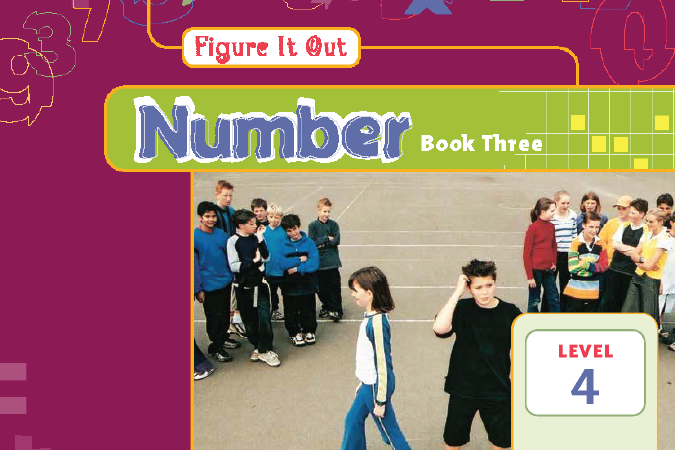PE problems
This is a level 3 number link activity from the Figure It Out series. It is focused on using basic facts to solve problems. A PDF of the student activity is included.

About this resource
Figure It Out is a series of 80 books published between 1999 and 2009 to support teaching and learning in New Zealand classrooms.
This resource provides the teachers' notes and answers for one activity from the Figure It Out series. A printable PDF of the student activity can be downloaded from the materials that come with this resource.
Specific learning outcomes:
- Use basic facts to solve a problem.
PE problems
Achievement objectives
NA3-1: Use a range of additive and simple multiplicative strategies with whole numbers, fractions, decimals, and percentages.
Required materials
- Figure It Out, Link, Number, Book Three, "PE problems", page 15
See Materials that come with this resource to download:
- PE problems activity (.pdf)
Activity
The students should spend some time thinking about how they will approach this problem. Although basic facts will be used to find the answer, how to even start could be a problem for some students. The four-step method outlined in the problem-solving section of Tāhūrangi - New Zealand Curriculum: Mathematics and Statistics provides a good framework to work with:
Step 1: Understand and explore the problem.
Step 2: Find a strategy.
Step 3: Use the strategy to solve the problem.
Step 4: Look back and reflect on the solution.
The following problem-solving strategies could be considered as students work through the first few steps:
- Guess, then check and improve.
- Use equipment.
- Act it out.
- Draw a diagram or picture.
- Make a list or table.
- Use logic and reasoning.
- Use algebraic thinking.
For this particular activity, you could suggest to a struggling student that they first make an assumption, for example, team D is the smallest, and start working from there. If this doesn’t give the correct answer, then have them try assuming that another team is the smallest. Encourage your students to use logic and reasoning to find which teams could be the smallest.
The students can use the same problem-solving approach for question 3, but those who are comfortable using algebraic notation might like to solve it algebraically. For example, all the team sizes can be expressed in relation to team B:
a = b – 6
c = b ÷ 2
d = b – 2
We know that a + b + c + d = 27, so using the information above, this can be rewritten as:
b - 6 + b + (b ÷ 2) + b - 2 = 27 |
|
|
b + b + (b ÷ 2) + b = 35 |
|
adding 8 to each side of the equation |
3b + (b ÷2) = 35 |
|
b + b + b = 3b |
3b + 0.5b = 35 |
|
rewriting b ÷ 2 as 0.5b |
3.5b = 35 |
|
|
b = 10 |
|
dividing both sides by 3.5 |
A table as a problem-solving approach could look like this: over that period of time.
A b - 6 |
B b |
C b ÷ 2 |
D b - 2 |
Total |
|---|---|---|---|---|
2 |
8 |
4 |
6 |
20 |
4 |
10 |
5 |
8 |
27✓ |
6 |
12 |
6 |
10 |
34 |
1.
a.
Team A: 2
Team B: 8
Team C: 4
Team D: 6
b. 20
2.
A + B and C + D
3.
a.
Team A: 4
Team B: 10
Team C: 5
Team D: 8
b. No. (27 is an uneven number.)
4.
34 if you are allowed two teams of 6 (Team A: 6; Team B: 12; Team C: 6; Team D: 10)
41 if each team needs to have a different number of students (Team A: 8; Team B: 14; Team C: 7; Team D: 12)
The quality of the images on this page may vary depending on the device you are using.


